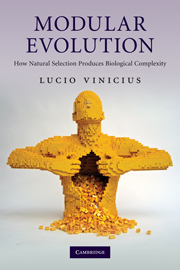Book contents
- Frontmatter
- Contents
- Preface
- 1 From natural selection to the history of nature
- 2 From the units of inheritance to the origin of species
- 3 Multicellularity and the developmental code
- 4 Life cycle evolution: life and death of the soma
- 5 Sex and its consequences: the transition that never happened
- 6 Animal societies: the case of incomplete evolutionary transitions
- 7 The new ‘Chain of Being’: hierarchical evolution and biological complexity
- References
- Index
4 - Life cycle evolution: life and death of the soma
Published online by Cambridge University Press: 05 June 2012
- Frontmatter
- Contents
- Preface
- 1 From natural selection to the history of nature
- 2 From the units of inheritance to the origin of species
- 3 Multicellularity and the developmental code
- 4 Life cycle evolution: life and death of the soma
- 5 Sex and its consequences: the transition that never happened
- 6 Animal societies: the case of incomplete evolutionary transitions
- 7 The new ‘Chain of Being’: hierarchical evolution and biological complexity
- References
- Index
Summary
The hypothesis of natural selection presented by Darwin in the Origin of Species offered a new solution to old mysteries such as adaptation and the origin of species and also offered breakthrough analyses of new mysteries such as male ornamentation and facial expressions in animals. It is surprising that Darwin, aware of the far-reaching consequences of natural selection, has thoroughly neglected a virtually universal feature of life: the inevitability of senescence and ‘natural’ death. The silence about the topic in Darwin's writings is even more unexpected as we realise that ageing satisfies all conditions for evolutionary treatment. Senescence and death can be estimated both at the individual and population level through life tables, and measured in its physical or behavioural aspects (Stearns, 1992; Austad, 1993). Rates of ageing and individual longevity within species are influenced by genes and are partially inheritable, which means they are potential targets of selection (Korpelainen, 2000). Longevity is also highly variable across species (Carey and Judge, 2002); many of us are aware of the differences between longer-lived (cockatoos, elephants, humans) and shorter-lived species (warblers, mice, fruit flies). Finally, longevity is likely to affect fitness for obvious reasons: other things being equal, longer-lived individuals in a population are expected to leave more descendants (Stearns, 1992). If other inheritable traits affecting fitness such as body size, shape or behaviour have evolved by natural selection, longevity should be no exception.
- Type
- Chapter
- Information
- Modular EvolutionHow Natural Selection Produces Biological Complexity, pp. 102 - 127Publisher: Cambridge University PressPrint publication year: 2010



